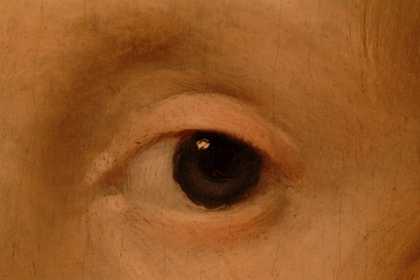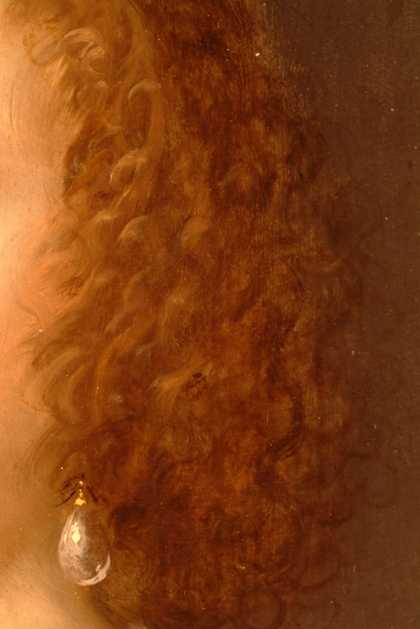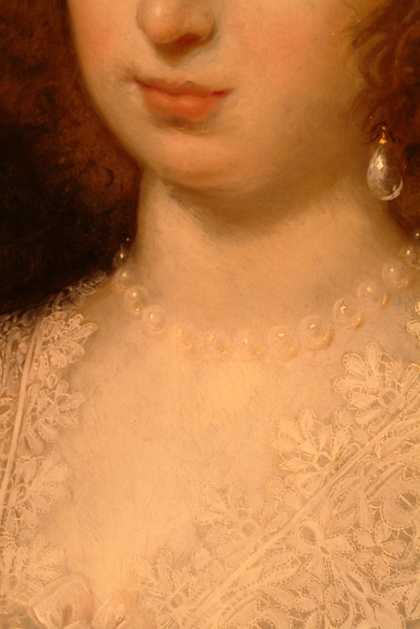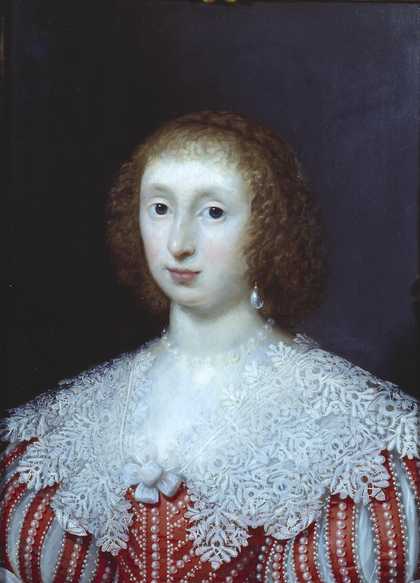
Fig.1
Cornelius Johnson 1593–1661
Portrait of an Unknown Lady
1629
Oil paint on panel
410 x 330 mm
T00745
The painting is in oil paint on an oak panel measuring 410 x 330 mm (fig.1). The panel is composed of two boards placed vertically and glued together at a butt joint, which runs just to our left of the sitter’s face (fig.2). The left board is 79 mm wide, the right 251 mm. Although the front of the panel is smooth, the back has been left with saw marks; there is a rough bevel on all edges.
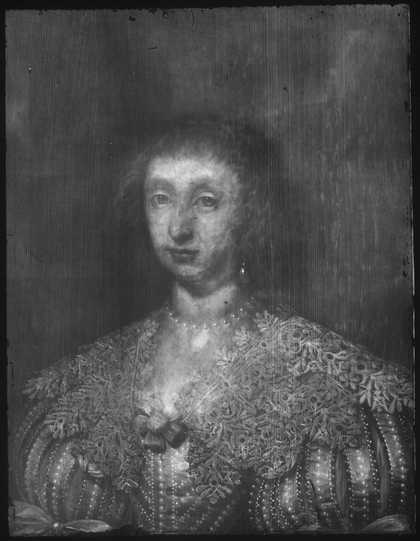
Fig.2
X-radiograph of the whole painting
The ground is dark off-white in colour and is on average 90 microns thick. It is made of chalk and animal glue. It is covered over with a thin coat of semi-translucent, pale grey, oil based priming, which is approximately 10 microns thick (figs.3–4).
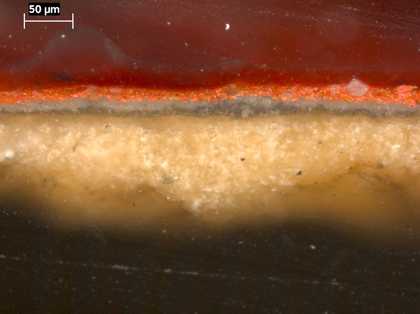
Fig.3
Cross-section of paint through the red costume at the lower edge of the painting, photographed at x320 magnification. From bottom to top: chalk ground; grey priming; grey underpaint; opaque red paint (vermilion); red lake glaze; modern synthetic varnish

Fig.4
Cross-section of paint through the red costume at the lower edge of the painting, photographed at x320 magnification in ultraviolet light. From bottom to top: chalk ground; grey priming; grey underpaint; opaque red paint (vermilion); red lake glaze; modern synthetic varnish
Infrared reflectography revealed no significant linear underdrawing in the face or figure (fig.5).
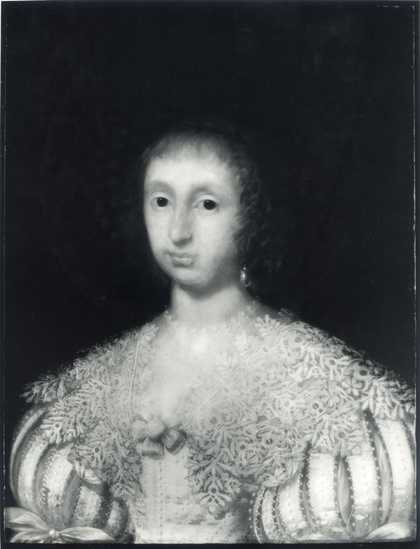
Fig.5
Infrared reflectograph of the whole painting
Examination through the stereomicroscope showed that the artist applied a coat of opaque grey colour (different from the priming) over the area destined for the sleeves and the chest area of the costume; it extends into the lower part of the lace collar (fig.6).
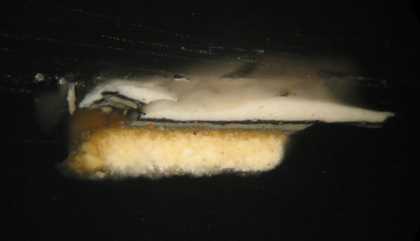
Fig.6
Cross-section of paint from the lace collar as it extends over the dark background paint; photographed at x260 magnification. From the bottom up: chalk ground; grey priming; grey underpaint; dark paint of background; white impasto of collar
Similarly to this painting’s pair, Portrait of an Unknown Gentleman (Tate T00744), an opaque, cool grey tone was roughly applied to the face and neck. Close examination of the eyes reveals dark red delineation there; it is visible in places where the overlying, final painting has become worn (figs.7–8). The hair was laid in with thin, reddish brown paint before being built up with more substantial, opaque colours applied with descriptive brushwork (fig.9). Thin layers of warmer and darker opaque paint were laid in wet-in-wet to the flesh to create highlights and shadows, leaving the underlying grey visible here and there to form the half-shadows (fig.10).
The opaque pinkish reds of the costume were laid in wet-in-wet, with a red organic pigment applied on top for the shadows of the costume and of the pearls (fig.11). Thick lead white paint describes highlights and the lace collar (fig.12). The very limited palette consists of black, white, browns and yellows (of hair and flesh) and organic red (cochineal-based lake) and inorganic red (vermilion).1
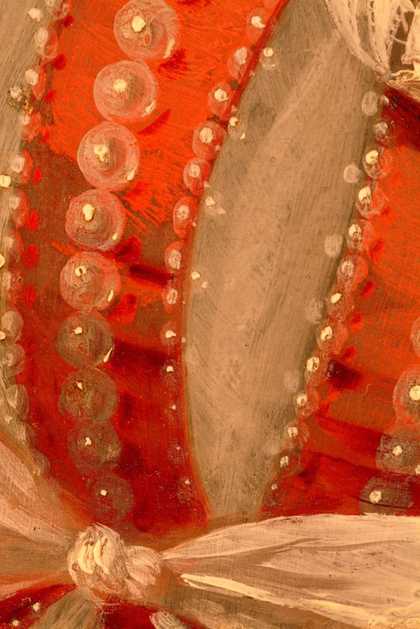
Fig.11
Red and white areas of the costume
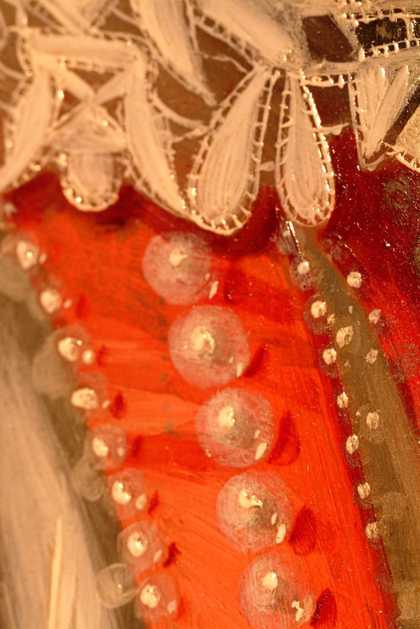
Fig.12
Low impasto in the white paint of the lace collar
The painting was cleaned and restored at Tate in 1972. The varnish is composed of modern, synthetic resins.
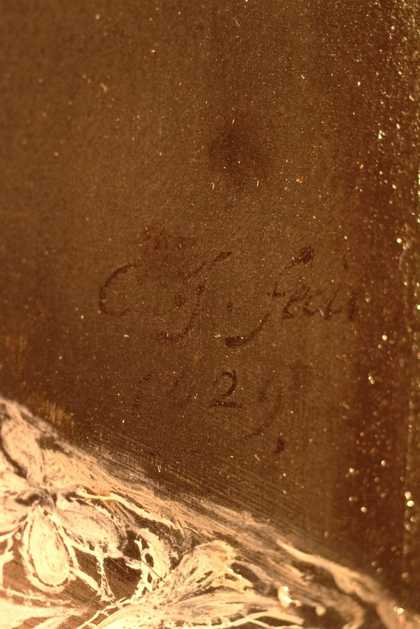
Fig.13
Signature and date, lower right corner
September 2003

